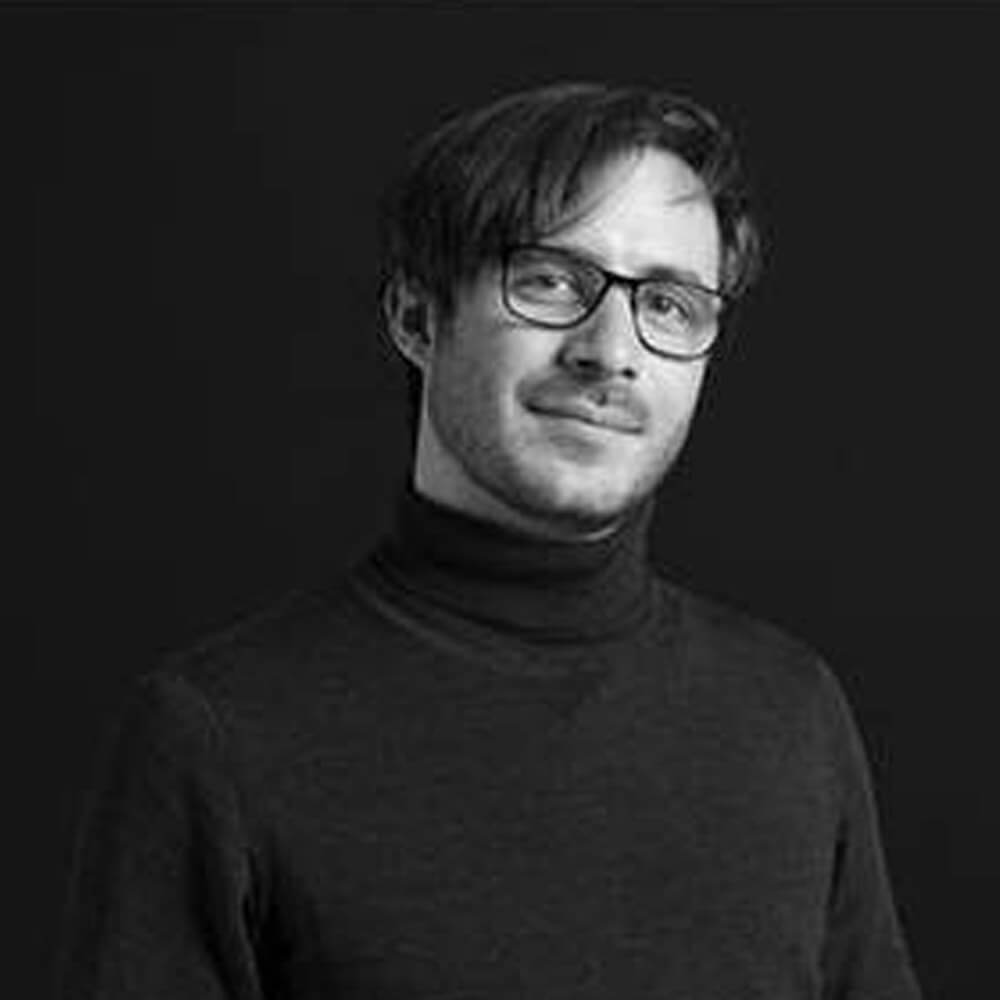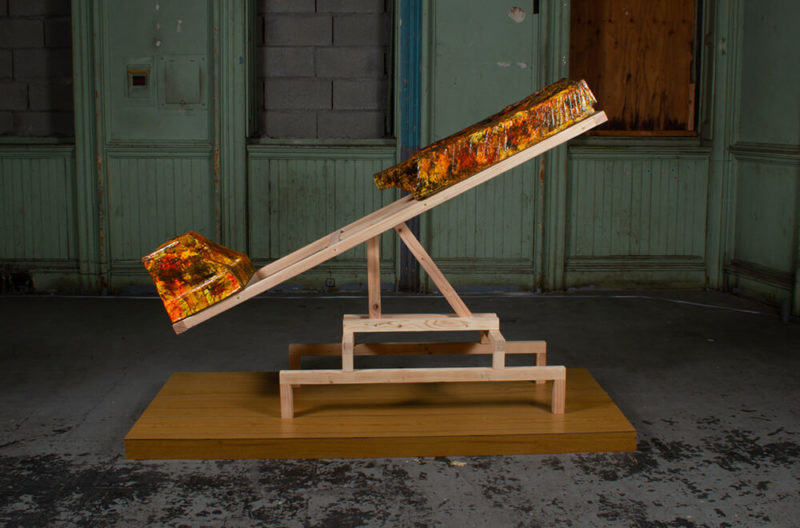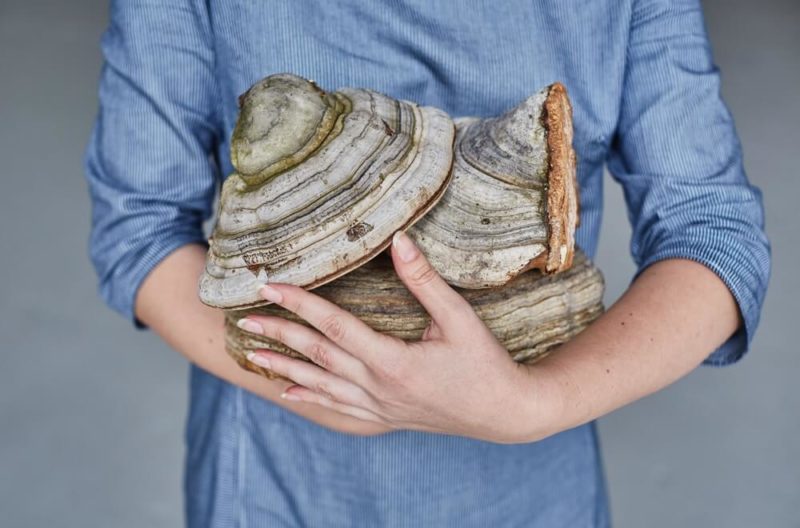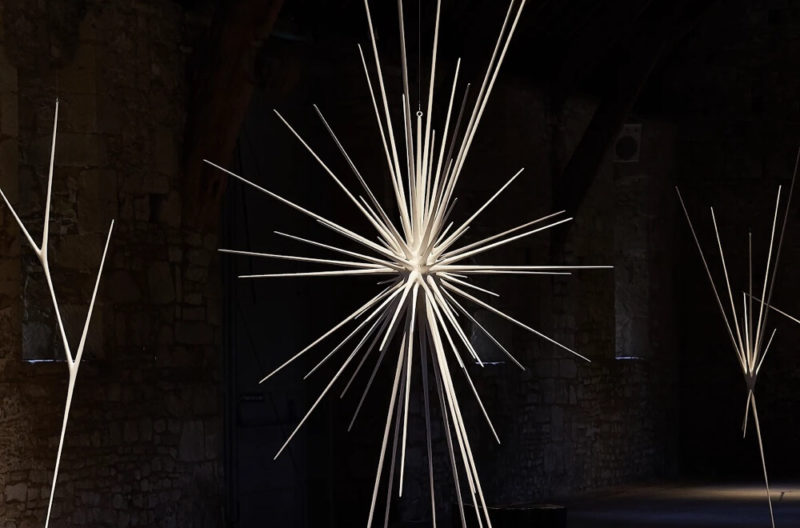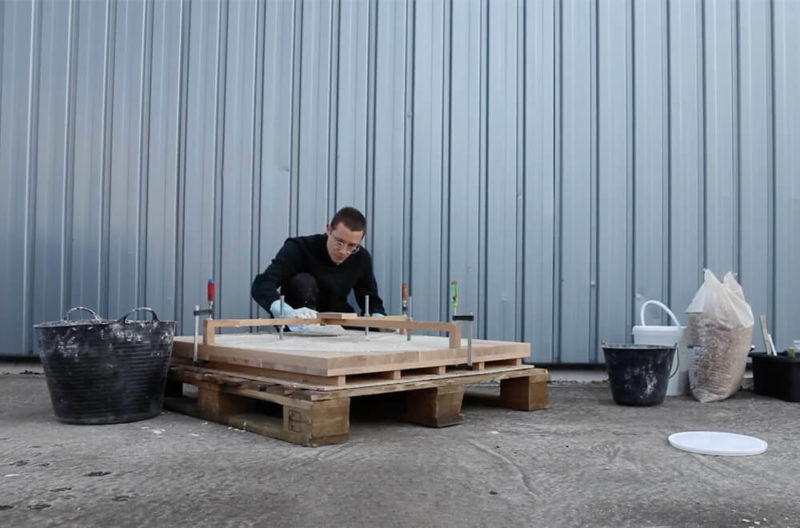Cat Loray
A large scale ceramic installation in an urban setting allows this multi-media artist to explore the interplay of art with architecture.
L’espace SCOPE, 2 rue Albert Einstein 75013 Paris
Until 26th February 2020
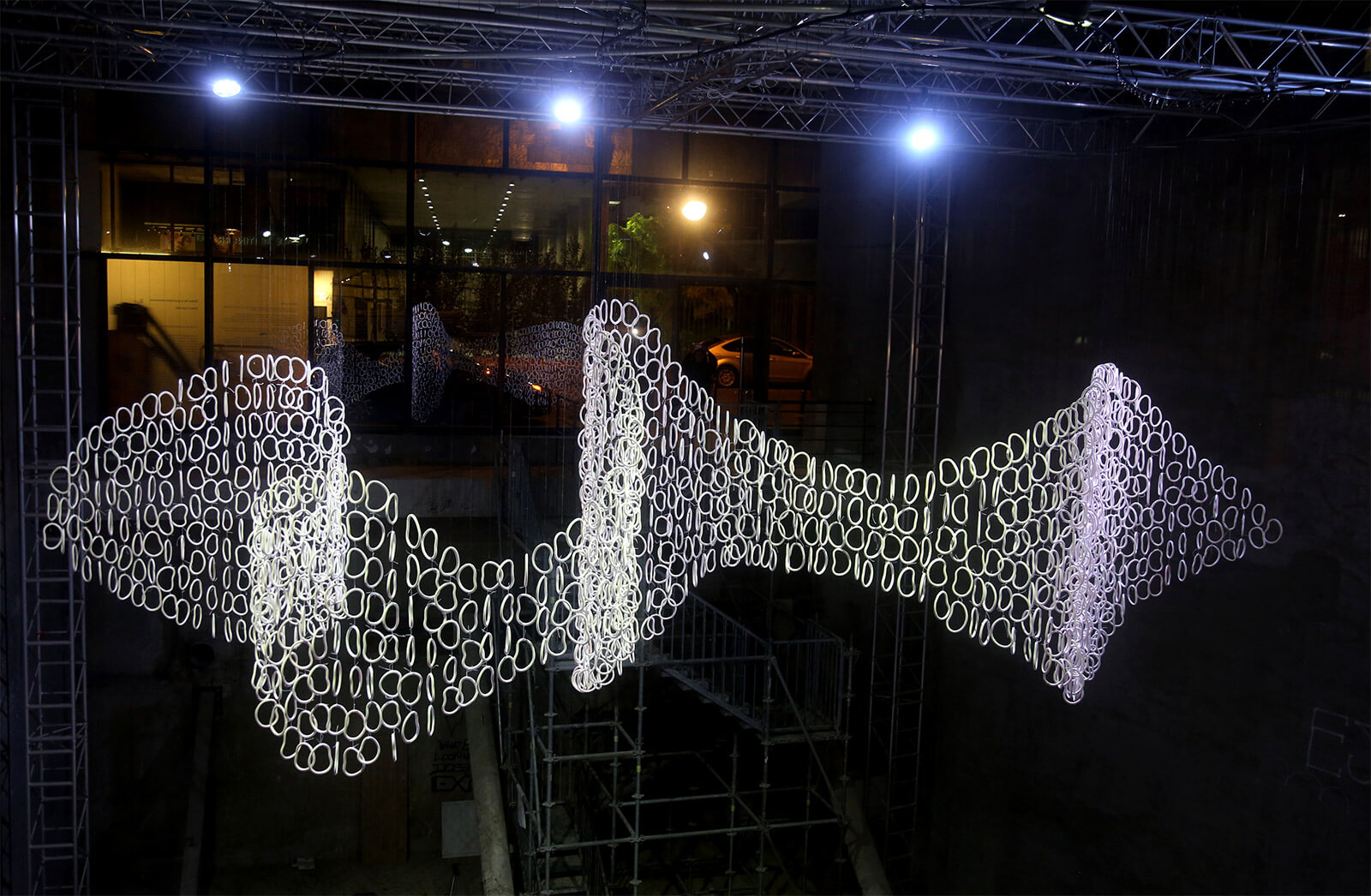
Cat Loray, ‘Wave’, 2019
COURTESY: Cat Loray / PHOTOGRAPH: Max Borderie
BORN IN 1962 in Nice, now based in Paris, Cat Loray is both a painter and sculptor. Her work, whether paint on canvas – or constructed from resin, rubber, metal or clay – is conceived in relation to particular spaces. Her latest installation ‘Wave’, a mesmerising undulating form constructed from ceramic elements and wire, can be seen in the rugged, urban venue, L’espace SCOPE, until 26th February. It is viewable through two windows: one on the Rue Albert Einstein, and the other on the Boulevard du Général d’Armée Jean Simon. The Design Edit caught up with the artist in Paris.
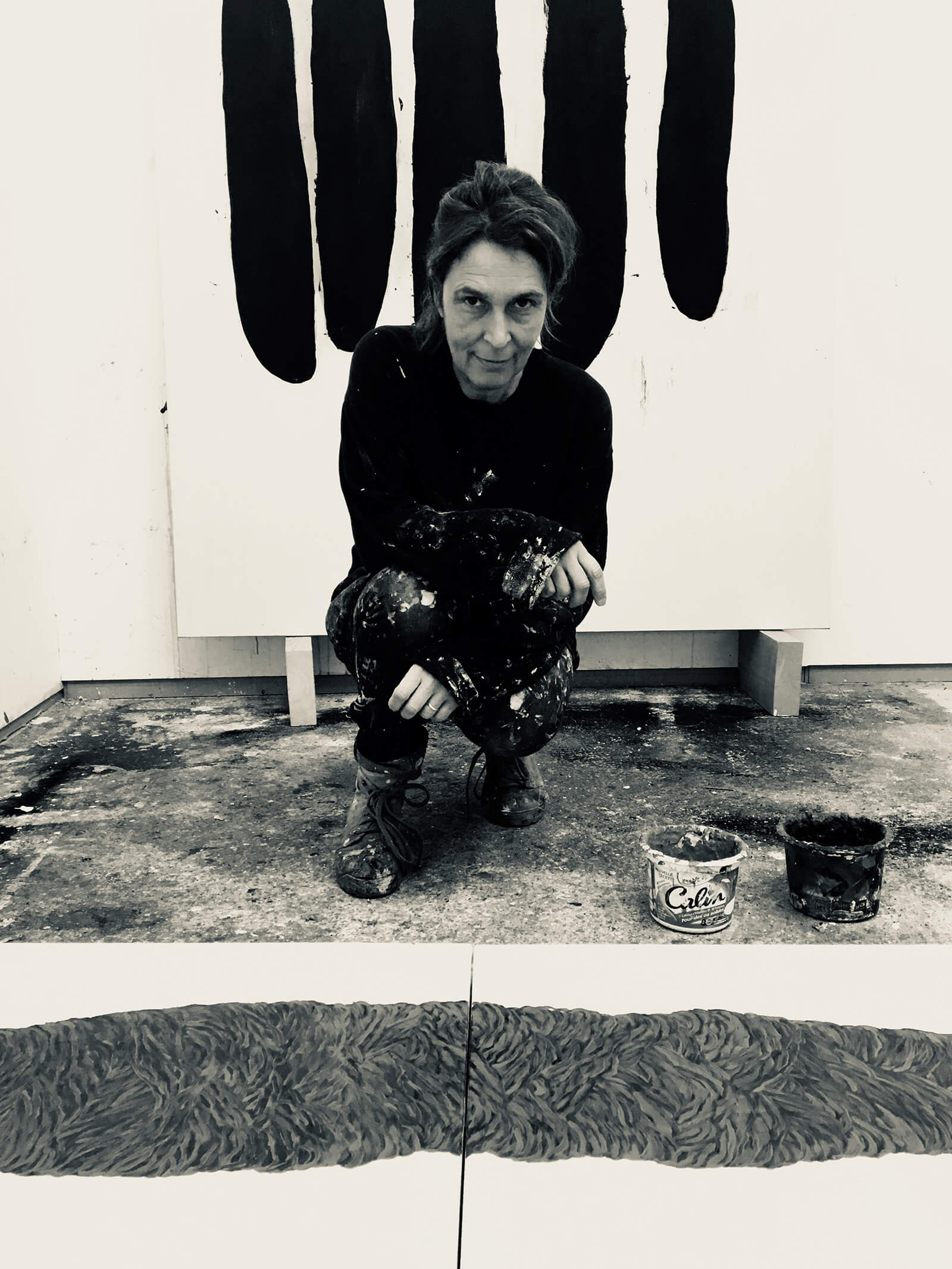
Cat Loray
COURTESY: Cat Loray / PHOTOGRAPH: Max Borderie
What is the main inspiration behind your ceramics?
I am a painter, and for me ceramics is related to the act of painting. Just like painting, the process is very slow, and it allows accidents at different stages of the process such as modelling, drying and assembling. When I started to work with sculpture, I started with ceramic. My first piece was for a show in a park, where I wanted to confront myself directly with the nature of the space. So I chose a chestnut tree and constructed a gigantic ceramic horn around it. Over time, the sculpture became patinated until it was part of the tree.
What is it about the material that you enjoy?
Clay is free of all constraints, you can use it in many different forms – raw, fired, glazed, liquid – it offers multiple different possibilities. There is also a direct relationship between the shaping of the clay and my hand movements – just like the brush stroke in painting. This is very important for me in my work.
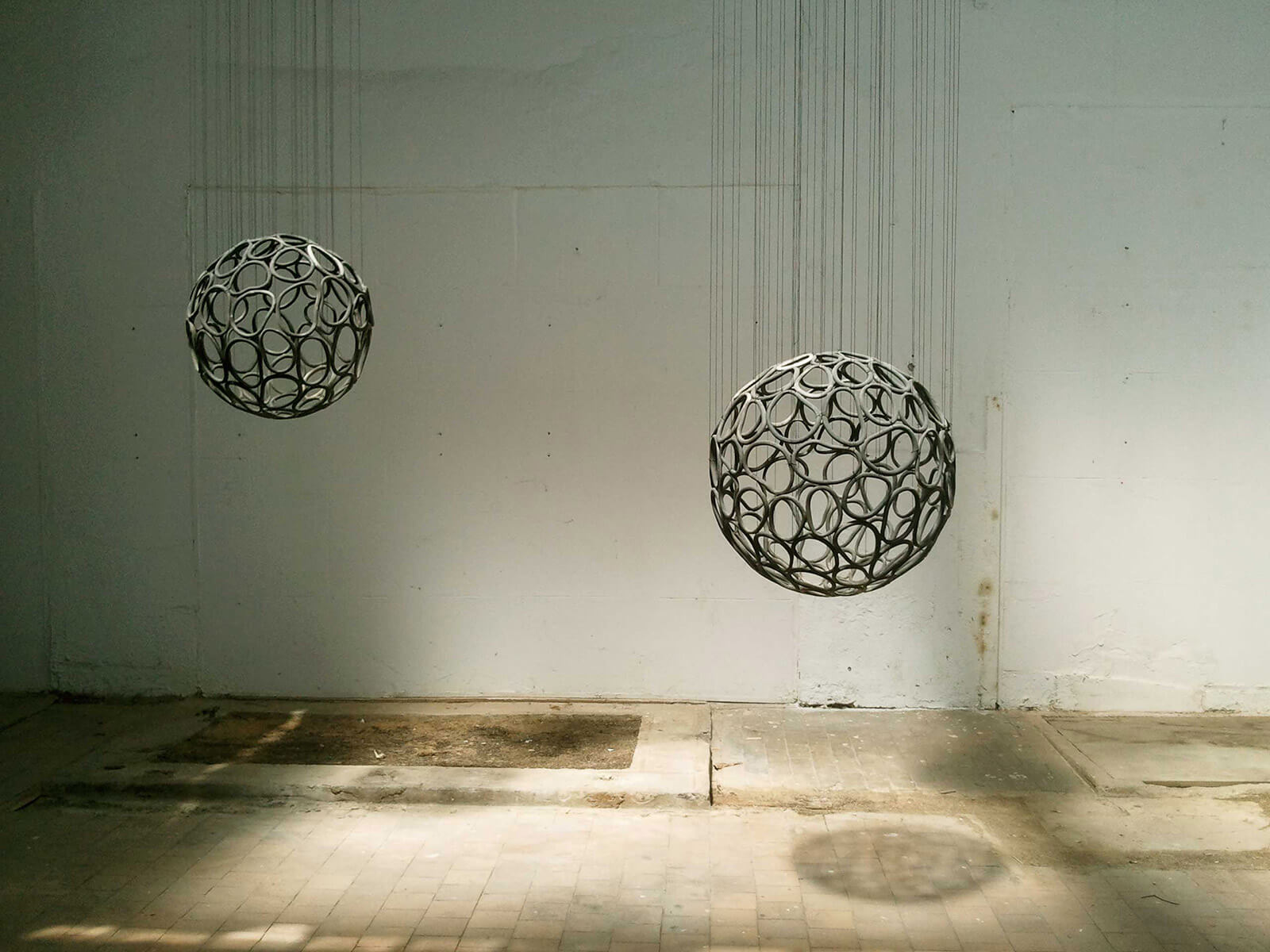
Cat Loray, ‘Terra’ 2011
COURTESY: Cat Loray / PHOTOGRAPH: Max Borderie
How do you work – what is your process?
Painting and drawing lead me to create form in space. The dialogue that the form creates with its environment is similar to the dialogue between a brush and the canvas. The process of creation is a constant accumulation of elements, shaped to highlight the connection between the different elements and the space and the void beyond. The images or the forms that I create evoke the transient observations that we register intuitively but not consciously. We see, we feel, we nourish ourselves with such remembered images.
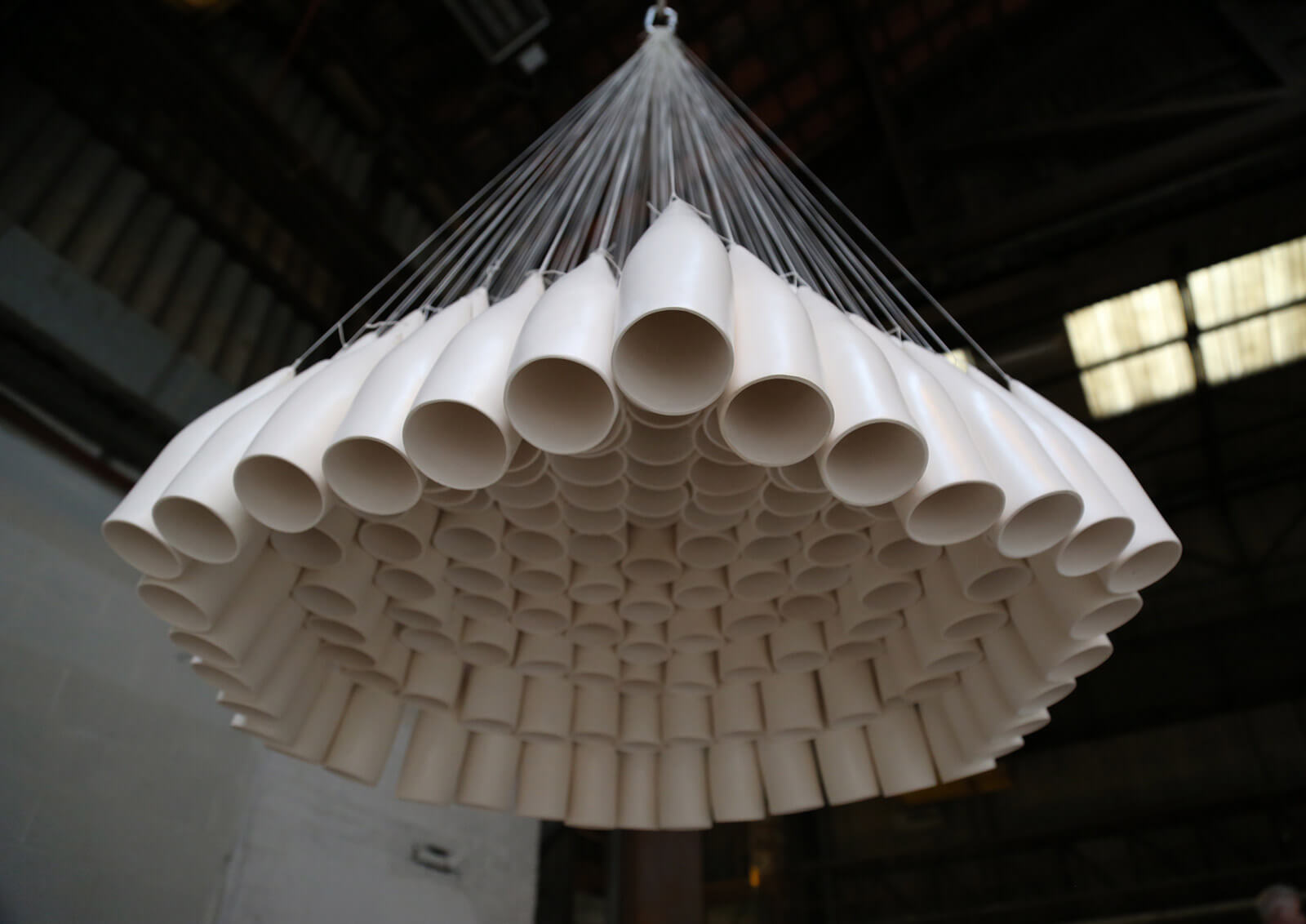
Cat Loray, ‘La mariée’, 2016 (detail)
COURTESY: Cat Loray / PHOTOGRAPH: Max Borderie
What is the relationship between your work and the architectural spaces in which it is shown?
The space is very important as my work is mostly site specific. Staging is very important to me – a place where drawing, painting and sculpture can come together. Every time, it’s a new narrative that I create.
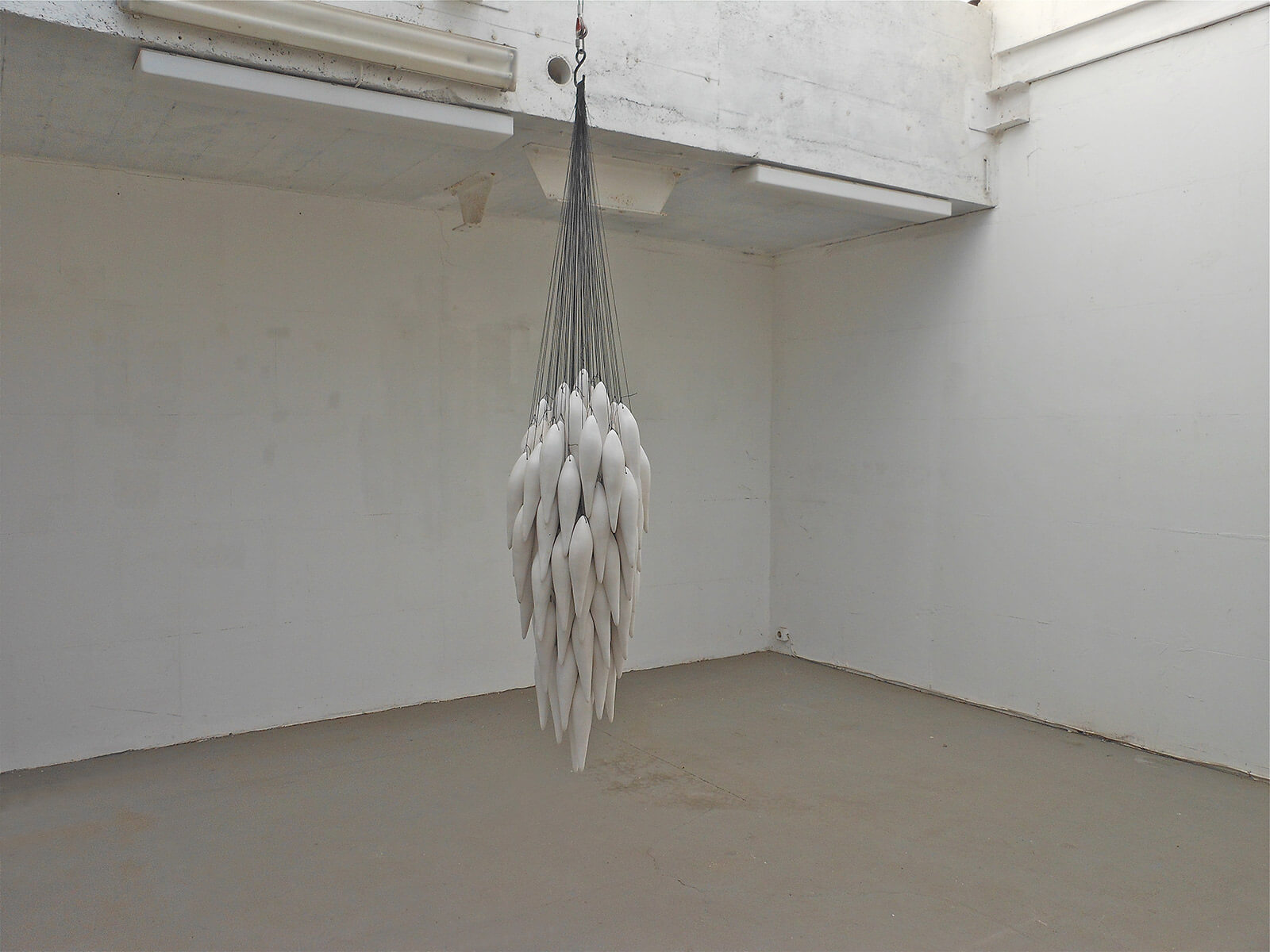
Cat Loray, ‘Larmes’, 2014
COURTESY: Cat Loray / PHOTOGRAPH: Max Borderie
What is the idea behind this latest exhibition of your work?
Firstly, this show has allowed me to work on a large scale and secondly, it has allowed me to play with the space and see how a work of art can affect an urban space. The space where we see the work is neither a gallery nor a museum: it is a concrete pit, a future train station in the making, a place that people pass without even stopping. It cannot be accessed by the public, it can only be seen from each side of the street through two large windows. My first idea was to work on lightness and transparency in order to integrate the artwork, rather than imposing something more forceful. It had to be visible both by day and night. During the night, the reflection of the light from the building allows the reflection of the sculpture on neighbouring windows.
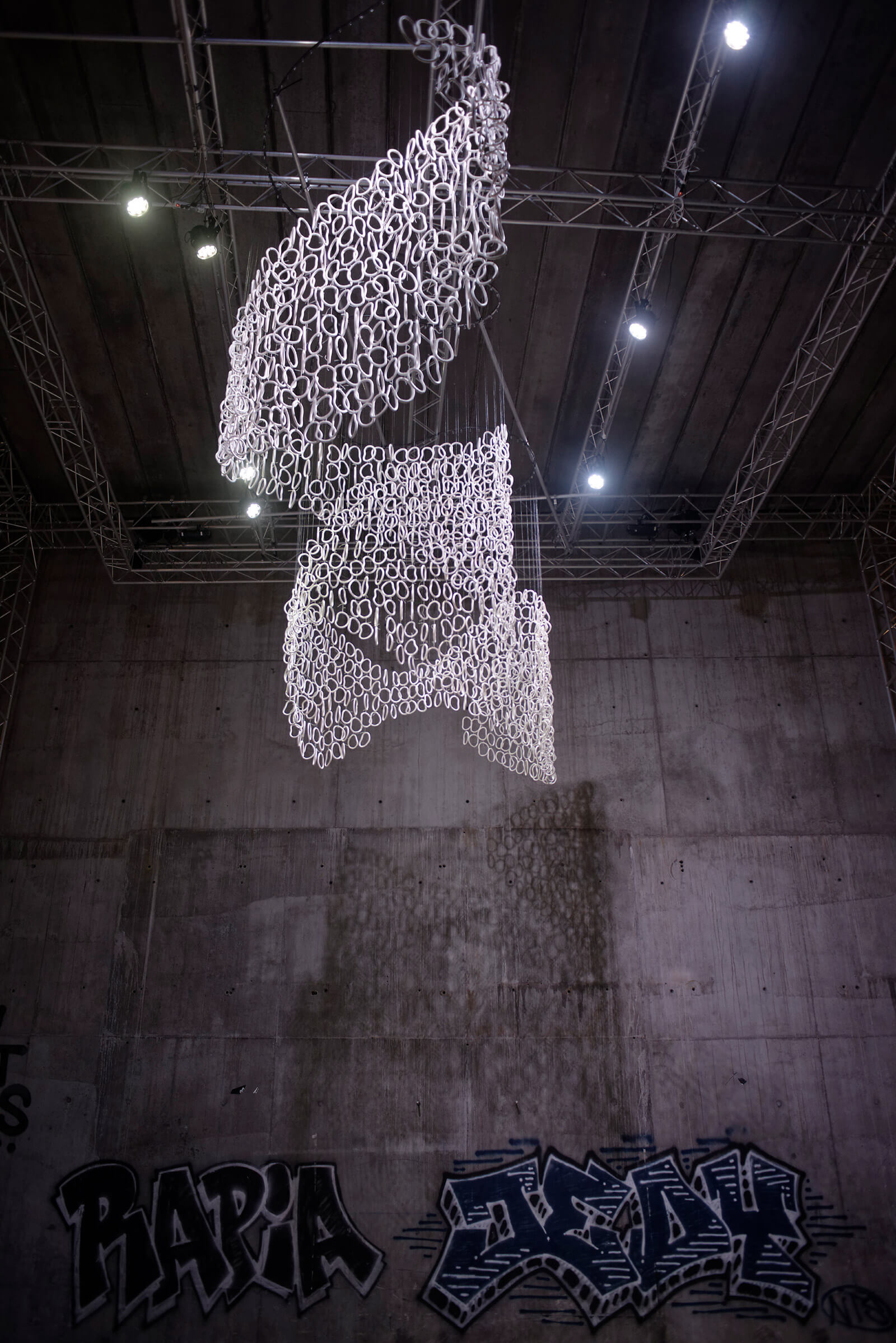
Cat Loray, ‘Wave’, 2019 (from below)
COURTESY: Cat Loray / PHOTOGRAPH: Max Borderie
The concept was to create an organic form rippling through the space. The piece is constructed like a mesh through accumulation (recurrent in my work). The fabrication of a thousand elements is unique for me, and has allowed me the space to express myself. The white glazing – simply fired with a mat wax finish – catches the light in this concrete pit, so that the perception of the undulatory movement changes depending on your point of view.
What is your next project?
At the moment, I am working on a new ceramic installation based on the spine – a line that goes through the space from the ground to the ceiling, with the elements adapted accordingly.
